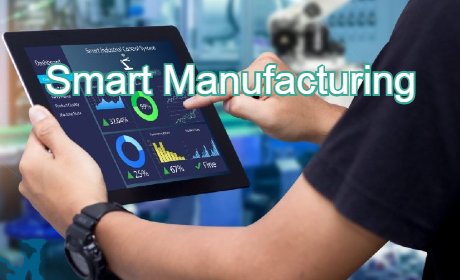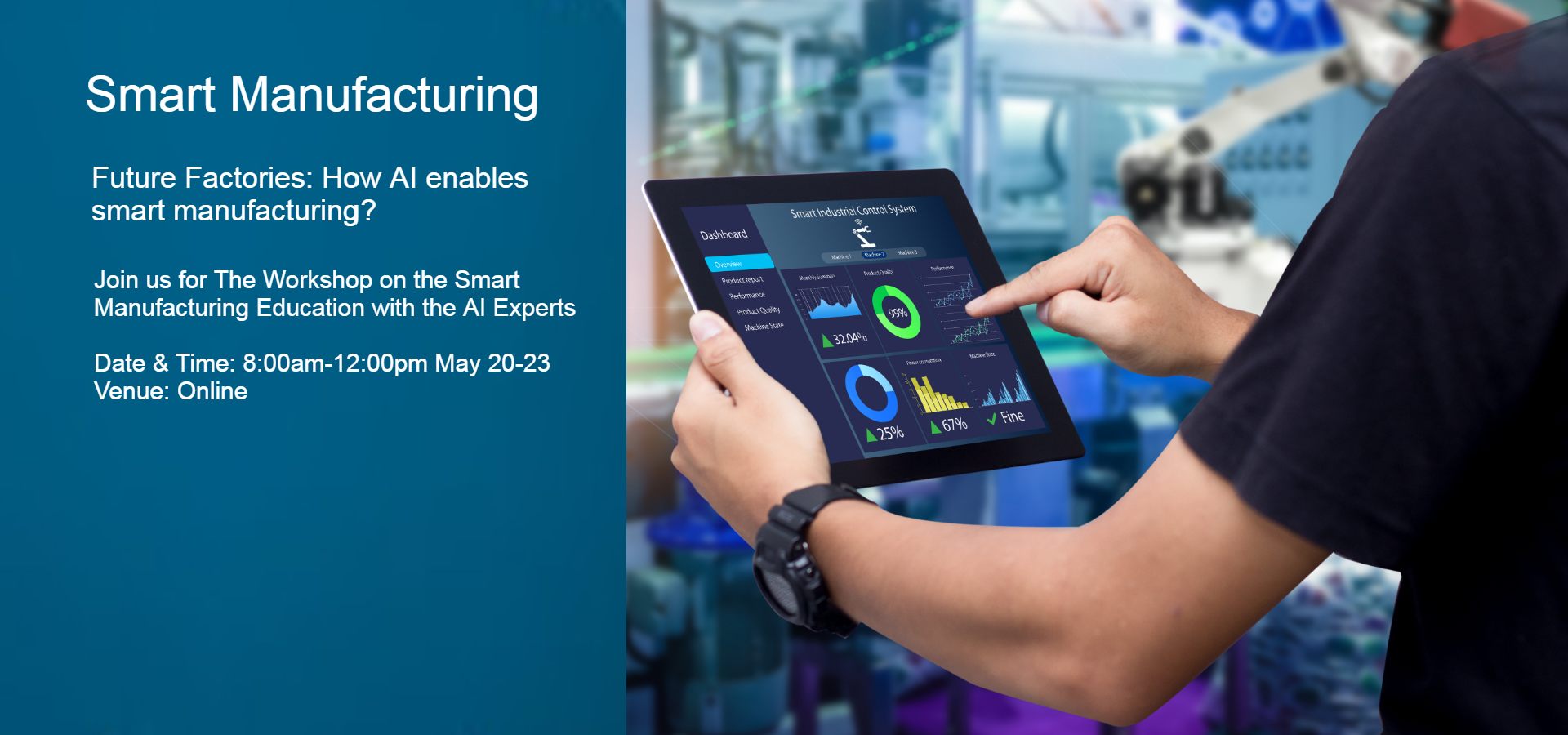
Smart Manufacturing
The course is about:
How AI solves manufacturing problems
How to build an AI system for smart manufacturing
COURSE DESCRIPTION
Artificial Intelligence is becoming an enabling technology for smart manufacturing today. In this course you will learn how to apply AI to the entire manufacturing process for cost saving, better production efficiency and significantly improved product quality.
The Smart Manufacturing course is taught by a group of senior engineers from the United States.
COURSE OBJECTIVES
Upon successful completion of this course, the students will be able to:
- Understand the key enabling technologies for smart manufacturing, especially the AI algorithms.
- Understand the AI algorithms used in product development and design;
- Understand the latest robotics and control enabled by the latest AI algorithms;
- Understand AI applications in quality control;
- Understand predictive maintenance and the AI algorithms;
- Understand process optimization using the latest AI algorithms;
- Understand how to design and build AI systems for manufacturing.
PREREQUISITES
Students are required to have prior knowledge in the following areas:
- Machine Learning
- Deep Learning
- Reinforcement Learning
- Computer Vision (Desired, but not required)
TEXTBOOKS
No textbooks available for this course as most contents are from the latest development of the area.
COURSE GRADING POLICY
Classroom Participations/Responses: 20%
Project: 50%
Final Exam: 30%
Attendance is mandatory for all class sessions. Students are subject to losing points for absences unless prior approval is obtained from Instructors or Teaching Assistants. Students receiving excused absences are required to watch the class recordings online as well as to fulfill any/all course requirements associated with missed class sessions.
COURSE CREDITS
The course contains 32 lecturing sessions and 32 office hours. The recommended number of credits for the course is 2.
MAIN CONTENTS
1. Key Enabling Technologies
- Sensor Data Fusion
- IoT Networks
- Machine Learning, Deep Learning, and Reinforcement Learning
- Edge Computing
- Predictive APIs
2. Product Development and Design
- Digital Twins
- Generative Design
- Product Lifecycle Management and Product Customization
3. Robotics and Control
- Human-Robot Collaboration Enhancement
- Robotic and Machine Vision Enhancement
- Localization and Mapping
- Machine/Vehicular Object Detection/Identification/Avoidance
4. Robotic Manipulation
- Robot Learning
- AI Algorithms Selection
- Challenges and the Latest Development of Strategies
5. Quality Control
- Root Cause Analysis
- Quality Monitoring
- Visual Inspections of Product
6. Predictive Maintenance
- Predictive Maintenance Model
- AI Algorithms for Predictive Maintenance
- Continuous Improvement of Prediction Accuracy
7. Manufacturing Process Optimization
- Manufacturing Processes
- Deterministic and Random Variation
- AI Algorithms for Process Optimization
8. Design and Build AI Architecture for Smart Manufacturing
- Building a Scalable AI Architecture in Smart Manufacturing
- Model Management
- Model Deployment
- Continuous Learning
- Automated Machine Learning
STUDENT PROJECT
Students will analyze a selected solution for smart manufacturing from the world’s top AI companies and propose improvements to the solution.
Students must submit a report for the project with the following contents:
- Problem identification & problem statement;
- Research on existing solutions from the smart manufacturing market and analyze the pros and cons of the solutions;
- Make improvements to the existing solutions by leveraging the latest AI algorithms or techniques;
- Personal reflection of the project.
STUDENT LEARNING ACTIVITY ASSESSMENT
The students are assessed based on the following criteria:
- Key Knowledge, Understanding, and Success Skills – students acquire skills such as creative thinking/problem solving, collaboration, and self-management of projects.
- Sustained Inquiry – students engage in a rigorous, extended process of asking questions, finding resources, and applying information.
- Student Voice & Choice – students make own decisions about the project, including project schedule and deliverables.
- Reflection – students reflect on learning, the effectiveness of project activities, quality of work, obstacles and how to overcome them.
- Critique & Revision – students give, receive, and use feedback to improve deliverables, with both instructors and peers.
- Communications: Students use various communication skills in expressing and interpreting information.
- Problem Solving: Students define and solve real world problems from global perspective, and use internationally recognized problem-solving and improvement methods, tools, and platforms.
- Leadership and Teamwork: Students apply leadership and teamwork skills in collaborating with others to accomplish goals and objectives.

